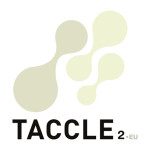LEARNING OBJECTIVES
At the end of this post you will be able to:
- Say what a voicethread is
- Create a digital conversation
- Use voicethreads in your teaching
DIGITAL DIALOGUE
Digital dialogue is part of everyday life for today’s students. It started with e-mail and text messaging on mobile phones and progressed to instant messaging, Skype, and synchronous video web conferencing. Personal relation- ships that used to be developed in school playgrounds and friendship networks around your own neighbourhood are now acted out in Facebook and MySpace. While the format may be different, the purpose remains the same – young people are forming identities and are driven to connect.
Helping students learn using digital conversations is very effective. It is a context they are familiar with – even if we are not – and for them the social dimension is a bonus.
VOICETHREADS
One of the best free tools we have found for teachers and students is VoiceThread. This is not only the name of the software but also ‘a voicethread’ is used to describe the content you produce. Voicethread describes itself as “A tool for having conversations about media.”
A voicethread is an online media album that can hold essentially any type of media (images, documents and videos) and allows people to make comments in 5 different ways – using voice (with a microphone or telephone), text, audio file or video (with a webcam) – and share them with anyone they wish. A voicethread allows group conversations to be collected and shared in one place, from anywhere in the world.
GETTING STARTED
Go to voicethread.com home page and sign up for an account. There is an excellent interactive tutorial that uses a voicethread to show you how to make one. You can start your own voicethread in minutes. It is fast, simple and very ‘un-technical’.
Basically you stick something up on a board – say a picture, a series of pictures or a video. Then you publish it to any- one you want. Then you wait for them to comment.
Commenting is very simple. You can click on one of the buttons under the picture then write something. Stick in a microphone (or use a built in one) and say something or just press the telephone button. If you want to respond by uploading a picture or a video of your own, that’s easy too. There is also a doodling facility – which is fun.
You have total control over your comments so you can change or delete them whenever you want. That’s it! There is an excellent tutorial at http://voicethread.com/#home.b409.i3616
Directions for posting voicethreads and links:
- Choose the appropriate grade page to embed your voicethread.
- Select “Edit this page”
- Write a short summary of the voicethread.
- Click on the “Embed Widget” icon and choose “Other HTML”.
- Go to the “Embed” feature of your voicethread and copy the HTML code for the smaller version of the voicethread. Paste this HTML code into the Wikispace widget.
- Change your voicethread to “public” if you want others to comment on the project.
- Copy a direct link to the voicethread page.
- Save the Wikispace page.
We can now view the examples on the Wikispace page or we can choose the link and go directly to voicethread.
If you want to add a comment to a project, make sure your correct identity is selected before you add a text, audio or webcam message.
USING VOICETHREADS IN THE CLASSROOM
Fact – most all pupils will like using voicethreads! They are easy, fun and, after Facebook, MSN, Skype, YouTube, phone texting and the rest, the basic ideas are very familiar. The novelty is having them all together in one place and actually being ‘allowed’ to use them in school.
Voicethread is engaging. Let’s face it – sometimes working with digital partners can be pretty boring. After all, email and discussion boards are nothing more than written text. Voicethread gives users something interesting to talk about – pictures! What is more, being able to actually hear one another makes digital communication through voicethread much more personal.
Voicethread is perfect for communicating and collaborating across countries or continents as it is ‘asynchronous’. That means users can work on and enjoy voicethread presentations and conversations at any time, even if their ‘partners’ are sleeping a million miles away! (More about asynchronous and synchronous e-learning later in the book).
Voicethreads can be set up around a single topic or for a single class or for groups of pupils within a class or between subject areas.
Once you’ve created an account and a collection of identities for students to use while commenting on a voicethread, it’s time to create your first presentation. Begin by carefully selecting a topic that will promote conversation and debate between students—and that can be conveyed through images currently available to you.
After collecting a series of images that represent your topic, carefully script out short opening comments for each image that include a question for viewers to consider. Scripting comments prior to recording will allow you to organize your thinking—and your images—in a logical order. This early organisation will save time as you produce your final product.
Initial comments should be somewhere between 1 and 3 sentences long. Longer comments will discourage viewers from adding their own thoughts—and tend to bore viewers quickly! Remember that your goal is to promote con- versation, not to lecture through pictures. If you find yourself recording longer initial comments, you probably have images that aren’t very interesting.
Monitor the voicethread regularly and make sure that anyone who makes a comment gets a reply. If other students fail to respond, then you should. Not getting a reply is demotivating. On the other hand, no response will also demotivate those making rude or inappropriate comments. You can also use the moderation facility to control content. However, a lot of teachers we have talked to say that the group will almost always police itself if you allow it to.
Pupils can set up their own voicethreads – groups of pupils in a class can take it in turns to provide the pictures or the video for that week. It could either be on the topic the class is working on or something in the broader subject area that interests them.
Voicethreads are an excellent tool for recording group assignments and can be used as an assessment tool.
Documents can be pasted up and commented on and you have a record of how they worked together. Voice threads can also be used for presenting group projects. In this context they are essentially PowerPoint slides with a voice over.
Voicethreads are useful for involving parents and others in class projects as they can talk to the class outside school or working hours. It is also a way of doing asynchronous interviews. For example, if there is someone that your group would like to talk to, they can leave a question and the interviewee can respond verbally when convenient. This can then be played back whenever you want.
There is a great tutorial produced by teachers on http://digitallyspeaking.pbwiki.com/Voicethread#WhatisVoicethread that not only shows you what to do technically but illustrates very well how voicethreads work in the classroom.
ASSIGNMENTS
- Listen to the tutorials on the Voicethread site and on the site above.
- Start a private voicethread and practice with friends and family.
- Find a picture relating to your subject area and start a voicethread with one class.
- Visit the Voicethread 4 Education wiki and hear how other teachers are using voicethread.
- Use one of their ideas.
- If you are looking for a place to discuss how to use VoiceThread , consider joining the VoiceThread Ning at http://voicethread.ning.com/
RESOURCES AND REFERENCE MATERIALS
Facebook: www.facebook.com
MySpace: www.myspace.com
VoiceThread: http://voicethread.com/#home
VOICETHREAD (s.d.) ‘What’s a VoiceThread anyway?’ (WWW). Voice Thread: http://voicethread.com/#home.b409.i3616 (25.06.09)
VOICETHREAD (s.d.) ‘Welcome to the VoiceThread 4 Education wiki’ (WWW). Voice Thread: http://voicethread4education.wikispaces.com/ (25.06.09)




 English
English Nederlands
Nederlands Deutsch
Deutsch Italiano
Italiano Español
Español Português
Português Română
Română Cymraeg
Cymraeg
No comments yet.